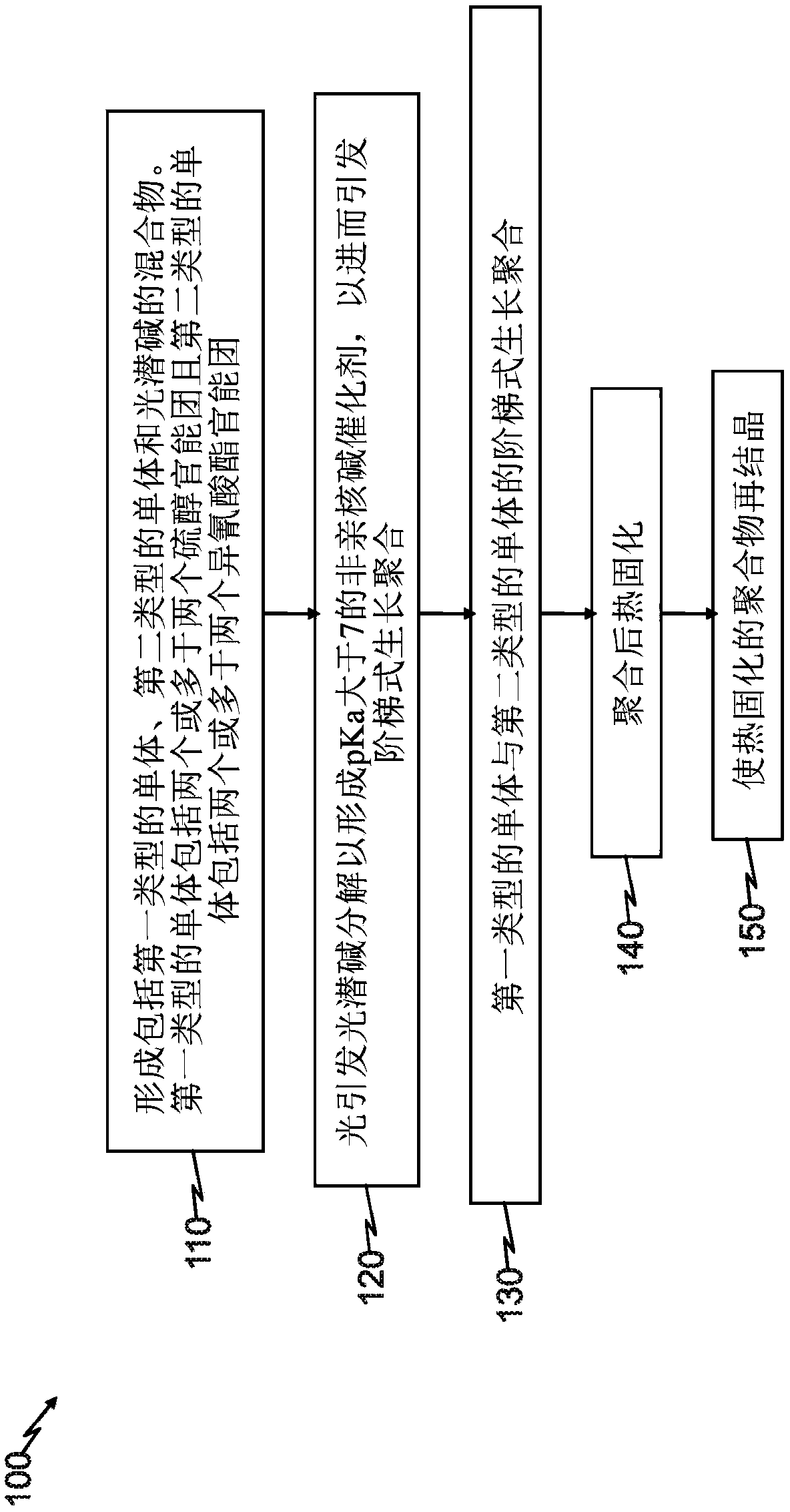Thiourethane polymers, method of synthesis thereof and use in additive manufacturing technologies
A urethane, polymer technology for tooling, additive manufacturing, additive processing, etc., that can solve problems such as limiting 3D part performance, long printing times, and poor mechanical properties
- Summary
- Abstract
- Description
- Claims
- Application Information
AI Technical Summary
Problems solved by technology
Method used
Image
Examples
Embodiment Construction
[0023] Embodiments of the present invention benefit from the discovery that semi-crystalline thiourethane polymers can be synthesized from compounds containing two or more thiol functional groups via a rapid anionic step-growth polymerization mechanism in the presence of photolatent bases. Synthesized from a mixture of monomers of the first type and monomers of the second type with two or more isocyanates, the photolatent base decomposes upon photoinitiation to form a non-nucleophilic base with a pKa greater than 7.
[0024] The fast reaction rate of thiol-isocyanate coupling achieved by this combination of monomers and non-nucleophilic base catalysts makes this thiol click polymerization chemistry ideal for providing application specific materials such as (but not limited to) impact resistant materials, 3D printing resins , bioimplantable materials or protective coatings.
[0025] One embodiment of the present disclosure is a semi-crystalline thiourethane polymer. Semi-cryst...
PUM
| Property | Measurement | Unit |
|---|---|---|
| tensile strength | aaaaa | aaaaa |
| tensile strength | aaaaa | aaaaa |
| tensile strength | aaaaa | aaaaa |
Abstract
Description
Claims
Application Information
 Login to View More
Login to View More - R&D Engineer
- R&D Manager
- IP Professional
- Industry Leading Data Capabilities
- Powerful AI technology
- Patent DNA Extraction
Browse by: Latest US Patents, China's latest patents, Technical Efficacy Thesaurus, Application Domain, Technology Topic, Popular Technical Reports.
© 2024 PatSnap. All rights reserved.Legal|Privacy policy|Modern Slavery Act Transparency Statement|Sitemap|About US| Contact US: help@patsnap.com










